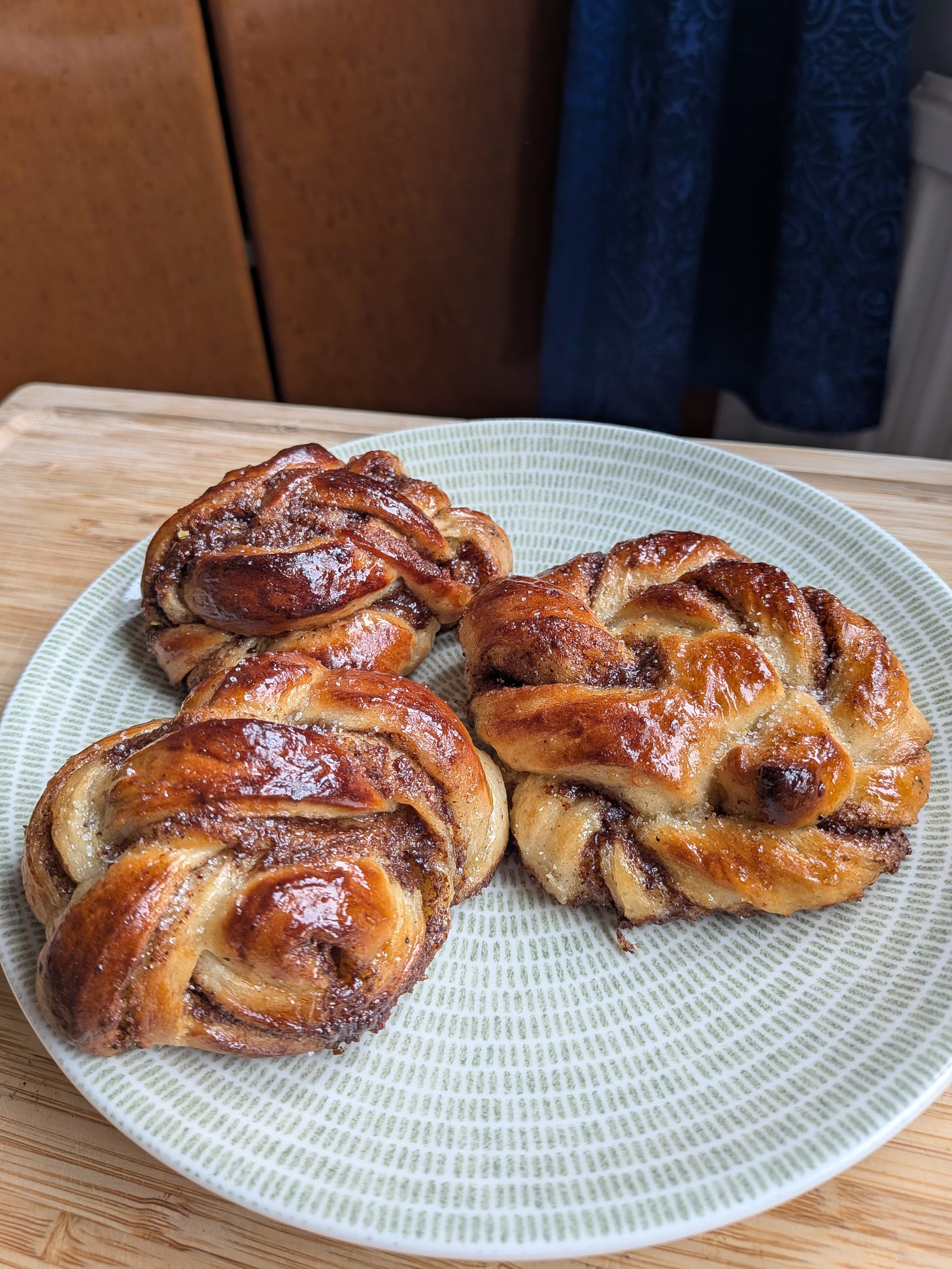A Serious Case of Swedish Buns
And a few words about something called Fika...
These Nordic types I’ve ended up spending my life with have a habit of making up words that no one can really translate.
Here in Finland the word sisu comes to mind. This word, etymologically linked to sisään (which means “inside”), invariably gets translated as “inner strength” or “guts” or, going by Wikipedia’s particularly sterile attempt, “stoic determination”.
The truth is, the word sisu, being a word that refers to something deep and profound and fundamental, is pretty much impossible to even explain let alone translate. I suppose it’s a bit like the word love that way; we all experience it but, I’d wager, would be hard-pushed to explain it.
Some words just defy neat identifications.
And just as “stoic determination” does a pretty naff job of evoking sisu, so too does “coffee break” do a horrible job of translating that joyous Swedish institution of fika.
The Swedish fika is another of those curious Nordic concepts that, like sisu (or love for that matter), is a thing best understood through experience.
No, it is not a mere coffee break. It is not a quick pause in the working grind for a moment to relax. It is a defined effort. An event to be planned, anticipated and embraced among friends and friends yet to be. It is a tradition, to be sure, but one without ceremony.
Reading things as an outsider, fika only becomes explicitly serious when it isn't considered serious implicitly. The Swedes adore their bastions of comfort. And to treat fika as something less than it is (as I experienced first-hand when suggesting a mid-service slice of apple and a room-temperature can of Red Bull was fika once during a long evening shift) is a sure way to insult this near-sacred institution.
As for specifics, great food is a necessity, and certainly coffee. But with all the hot drinks, freshly-baked cakes and confectionary, fika can't be so-called without the warmth of good company as well.
The bun recipe I’m sharing today is a perfect way of celebrating such company.
Now, if there is one thing I adore about Swedish food, it is the use of cardamom in cakes and pastries. The citrusy, almost electric zing, gives cakes and buns the most vibrant aroma, cutting through even the richest of doughs.
This recipe is the product of years cooking and refining them in Sweden and Finland. I love it. The balance of spice, the sugar, the butter. The way the syrup glaze, doused on the oven-hot buns, encourages the retaining of moisture within. I love these buns so much and it’s a thrill to be sharing them with you today.
One development I’ve made to this classic recipe is the addition of some very thick porridge in the dough. This sounds weird (it’s a tip I first shared here) but the gelatinised starches in the porridge work to condition and hydrate the dough, which doesn’t just make for the softest, most tender buns fresh from the oven, but also makes them keep that way for so much longer than without it. These buns are beautifully moist and tender even 2 days after baking them.
My final development is to use just a touch of cornflour in the filling, which my testing suggests keeps it from seeping out of the buns while they cook.
The below recipe gives details on how to make either cardamom or cinnamon buns.



